Habib Bangura on Urban Assembly’s Project Cafe
Key Points
-
AI-driven tools like Project Cafe offer scalable, cost-effective solutions for classroom observation and instructional feedback, enhancing educational outcomes.
-
The emergence of AI in education is not just about efficiency; it’s a catalyst for transformative shifts towards project-based, student-centered learning models.
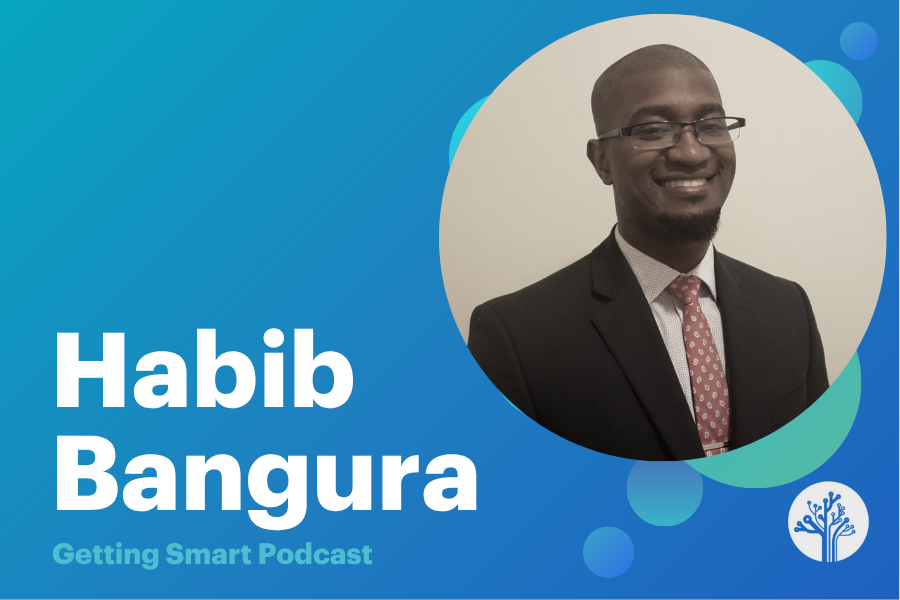
In this episode of the Getting Smart Podcast, Nate McClennen dives into the cutting-edge world of AI in education with Habib Bangura from Urban Assembly. Discover how Project Cafe is revolutionizing classroom instruction by providing real-time, developmental feedback to teachers. By utilizing AI-driven video analysis, this innovative tool enhances teaching efficiency and effectiveness, paving the way for improved student outcomes. Join the conversation to explore how technology is transforming traditional educational models and what it means for the future of learning.
Outline
- (00:00) Introduction to the Podcast
- (06:19) Urban Assembly’s Mission and Approach
- (11:52) Challenges in Scaling Instructional Quality
- (17:01) Project Cafe: AI-Driven Instructional Feedback
- (27:32) Future of AI in Education
Introduction to the Podcast
Nate McClennen: Welcome, everybody. You’re listening to the Getting Smart podcast. I’m Nate McClennen, and today we are super excited to dive into an element of our learning innovation framework that talks specifically about the learning models, how learners are supported in reaching the outcomes set by the system, school, district, or whatever.
In the learning model part of our framework, we talk about values, norms, climate, and culture as a foundational base of the learning model. Then, we discuss the design principles, the core beliefs about teaching and learning that schools, systems, and networks can have, followed by an overarching instructional framework that describes instruction, learning, design, and assessment. Typical things you’d find in a district. The end of the learning model is about how we implement all this, which involves professional learning and portraits of educators and leaders. Today, we’re diving into professional learning and specifically classroom observation.
We know a few things about teaching and learning. Number one is obvious to our listeners and anyone who’s been in a school: good teachers make a difference in student outcomes. We can all remember one of our greatest teachers and how they’ve helped us improve, grow, and engage. We also know that a significant amount of time and money is spent on professional learning and PD. However, a lot of PD is not super effective. I was looking up research on effectiveness in preparation for this podcast, and the average effect size, when you look at test scores, is around 0.06, which is super small.
Some of my go-to resources are Linda Darling-Hammond, who wrote a 2017 paper on great PD. Among other things, it talks about providing coaching, expert support, and offering opportunities for feedback and reflection. These support the idea of classroom observation. Another great study by Sims at the University College London and others shows how to help teachers develop specific techniques for implementation to help learners reach outcomes. They also discuss embedding these changes in practice so they become routine. Today, we’ll talk about how to make effective practices routine.
A long time ago, I helped build a tech solution that used classroom video. We uploaded the video to the internet and crowdsourced feedback from an expert group of teachers to help all teachers in the community improve faster. We started with video cameras and eventually built an app for the iPhone. We learned a lot and eventually ran out of steam. However, with the advent of AI, things have changed in this arena. Classroom data collection and analysis on teaching can be faster, replacing the crowdsourced approach I started with a decade ago with AI. This is a super intriguing possibility to help teachers improve faster. When I met our guest today, Habib Bangura, at ASU GSV in San Diego, I was excited to dive deeper into the Urban Assembly and specifically the AI-driven video instructional feedback tool he’s building. Habib is the Managing Director of Programs at Urban Assembly, an education organization focused on advancing students’ economic and social mobility by improving public education. No small task, but an important one. Welcome, Habib.
Habib Bangura: Nate, thank you so much for having me. I’m excited to engage in this conversation, and thank you for the way you framed it.
Nate McClennen: Awesome, awesome. We’ll start with my preamble question for many folks: what teacher engaged you the most? Not just engaged you, because we can have fun teachers we don’t learn much from, which is engaging but not great for learner outcomes. So, who engaged and helped you learn the most in K-12 experience? Reach back a bit, and who was that teacher, and how did it work?
Habib Bangura: There are three educators that come to mind, and I say educators specifically because they weren’t necessarily teachers. One is a teacher, Ms. Engerson, my 11th-grade ELA teacher. I remember her distinctly because I did not get great grades in her course. She was a very strict grader. I appreciate her because of the quality of feedback she provided, which translated into me becoming a much stronger writer. I didn’t like it at the time because I was 16 or 17, but when I got to college, I breezed through essays while my peers struggled. I trace that back to her feedback.
The other educator I want to name is David Dotty, a life mentor and my motivation for doing well in school. I floundered in high school, was disengaged, but after transferring to a new school and meeting Dave, my basketball coach and a teacher, I developed a strong relationship with him. Even during free periods, I would hang out in his class. I became diligent with schoolwork because I didn’t want to disappoint him. It was the strength of the relationship that made a difference.
Nate McClennen: Great examples. Whenever I ask this question, it’s always about high relationship and high expectations. When both ingredients are present, learner outcomes are great. Students feel they belong, they’re motivated, and they’re learning. We’ll likely hear more about that today. You’ve done interesting things in your career, and you’ve been at Urban Assembly for a couple of years.
Urban Assembly’s Mission and Approach
Nate McClennen: Give our listeners a sense of what the Urban Assembly is.
Habib Bangura: The Urban Assembly is a network of 22 unscreened public schools in New York City, founded on a simple but powerful belief: every young person deserves access to an education rooted in purpose, opportunity, and connection. Practically, our founder, Richard Kahn, built these schools reflecting on the gap between what kids learn in schools and what industry demands. New York City’s first CTE schools were founded on career-connected learning, ensuring what students learn translates directly to industry demands. Other design principles include socio-emotional learning, acknowledging that success requires skills beyond content knowledge, and high-quality instruction, emphasizing the quality of educators and feedback.
Nate McClennen: I love the idea of purpose, opportunity, and connection. Is there a standard model in Urban Assembly classrooms? Is there a look and feel?
Habib Bangura: Career-connected learning and social-emotional learning are deeply embedded in our school culture. High-quality instruction is emphasized through investment in professional development and feedback. Our schools are small, facilitating personalized engagement. You’ll find career-connected learning in action, whether it’s students engaging in simulations or developing portfolios.
Nate McClennen: Beyond the 22 schools, you’re a model provider, replicating that model in partner schools across the country. What’s the scale of that?
Habib Bangura: Our founder aimed to improve public education beyond New York City. After initially building schools, we shifted to disseminating what we learned to other schools and districts nationwide. We’re sending experts to embed career-connected learning and socio-emotional learning. We now have partner schools in nine states and about 79 schools in our partner portfolio.
Nate McClennen: Are all partner schools focused on SEL, Career-Connected, and high-quality instruction?
Habib Bangura: Yes. Our SEL work has the largest scale, especially post-pandemic, highlighting the need for socio-emotional skills. There’s growing interest in career-connected learning, partly due to attention from philanthropy and government in that space. We also have partners interested in instructional supports.
Nate McClennen: That provides listeners with great context. Love the work happening and the network of schools. Let’s dive into today’s topic: instruction. What does it look like in a classroom? Do you have specific criteria across the 22 schools? Was it being used before the tech solution? How effective was it, etc.?
Challenges in Scaling Instructional Quality
Habib Bangura: The challenge was improving instructional quality at scale. After building schools, we aimed to disseminate learning more efficiently to support our vision of improving public education. We sent instructional coaches into schools to provide observation and feedback, which was effective. However, we could only support a handful of teachers. Principals appreciated our support but wanted more teachers to benefit. For a nonprofit, supporting all teachers in our network would cost $3 million a year, which was cost-prohibitive.
Nate McClennen: You already had criteria set. What are the look-fors? Were they generated internally or using an external model?
Habib Bangura: We originally created our own model, which was content specific. Over time, we evolved to focus more on pedagogy, leaning heavily on the CLASS framework, which is a composite of high-quality instructional interactions.
Nate McClennen: Got it. So the challenge is that while effective, it’s too expensive. You need more coaches but lack resources. Enter AI. What was the aha moment for you?
Shorts Content
Project Cafe: AI-Driven Instructional Feedback
Habib Bangura: The timing of AI technology was perfect. Our schools moved to video instructional coaching years before AI, but it was time-consuming for coaches to watch videos, identify instructional moments, and prepare feedback. AI offers a solution. If sports can provide real-time feedback to players using video, why can’t we do the same for teachers? That’s the genesis of Project Cafe, a platform using AI and video for real-time instructional feedback, focusing on developmental rather than evaluative feedback.
Nate McClennen: Set the scene: iPhone-based app, video camera. What’s the setup in this pilot?
Habib Bangura: It’s video-based, using iPads or smartphones with microphones. Record and within 48 hours, you get analytics on student-teacher talk time, classroom climate, encouraging language, on-topic speech, and more.
Nate McClennen: Let’s dive into on-topic speech. Is there a pre-load by the teacher for the classroom objective?
Habib Bangura: No, the AI picks that up. When you log into your Cafe instance, you see an AI-generated summary capturing course objectives and key questions. The AI tracks conversations to see alignment with objectives, without requiring manual input.
Nate McClennen: How are teachers reacting? Do they like it? Is it helping them? Any emotional reactions?
Habib Bangura: Reactions are varied. Newer teachers feel more comfortable with video recording. As humans, we’re generally uncomfortable watching ourselves on video. The tool shows only clips, not the entire video. Feedback has been positive. Instructional coaches appreciate the reduced time cost of preparing for coaching conversations. Funny enough, the most popular feature is the downloadable CSV transcript, allowing teachers to analyze questioning levels and quality.
Nate McClennen: I hear clear benefits in efficiency. What’s been the biggest learning for you, and where is the team headed next?
Habib Bangura: The biggest learning is understanding what users find most valuable, like the downloadable transcript. Next, we’re focusing on metrics like teacher wait time, previews, summaries, and language sentiment, available soon. We’re eager to explore video-based metrics, like teacher proximity and student engagement, to further enhance the tool.
Nate McClennen: What’s the metric of success for you? How do you know it’s working?
Habib Bangura: We want to see improvements in key areas and correlate teacher practice improvements with student outcomes. That’s part of our research agenda.
Nate McClennen: Appreciate it and am fascinated to see where it will go. Is there a direct link to the product or is it still in pilot mode?
Habib Bangura: Interested folks can email me directly or go through our Urban Assembly website to contact us.
Nate McClennen: Perfect. We’ll put this in the show notes. Okay, stepping back, you’ve been thinking about big ideas. What’s your take on AI in education? You’re using video for a specific use case. Is AI more disruptive than that?
Future of AI in Education
Habib Bangura: I think it already has disrupted education. Schools haven’t caught up yet. The biggest opportunities lie in reducing time costs and access to information, which have been constraints in education. AI provides access to information in an easily digestible way, and schools can improve outcomes using it.
Nate McClennen: So well said. We hear anecdotes of AI being used in high school and higher ed. If the assignment is knowledge-based, AI will be used. It can’t collaborate with peers on projects, though. AI is a forcing mechanism to shift education, and if you don’t shift, education won’t be worthwhile for students.
Habib Bangura: Absolutely. AI forces us to shift to project-based learning, which aligns with industry demands. Schools still focused on rote memorization are setting students up for failure. AI is necessary pressure to align education with high-quality learning experiences.
Nate McClennen: Intrigued by what’s going on at Urban Assembly, with the theme-based small schools and Project Cafe. A reminder that great teachers make a difference, and Project Cafe helps teachers improve. Appreciate the conversation, Habib. Thank you for coming in.
Habib Bangura: Thanks for having me, Nate.
Guest Bio
Habib Bangura
Habib Bangura leverages technology, policy, and practice to scale solutions that promote equity, economic security, and well-being. His work centers on building opportunity pipelines that connect individuals—especially young people—to fulfilling, economically viable futures through better access to guidance, credentials, and career-aligned pathways. As Managing Director of Programs at The Urban Assembly, Habib leads initiatives that strengthen postsecondary readiness, social-emotional learning, and instructional quality. He spearheads the use of AI to scale proven solutions, including an advising tool powered by big data and large language models, and an AI-driven instructional feedback system that provides real-time insights to educators. He also works with industry partners to expand access to career credentials in high-wage, high-growth sectors. Habib’s work bridges education, AI, and workforce development to drive systemic, scalable change. He has previously led the national expansion of high school success models across 150+ schools in 50+ districts, benefiting over 50,000 students, and developed data tools used in schools across multiple states. A recognized expert in education innovation, he frequently shares insights on leadership, AI, and the future of learning and work. Outside of work, Habib is a husband and father of three, dedicated to building a future where everyone has the opportunity to thrive
Links



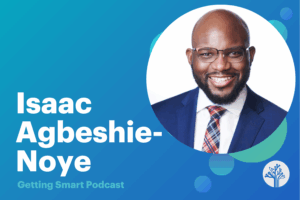
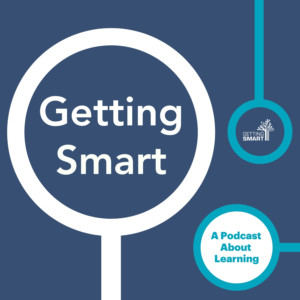


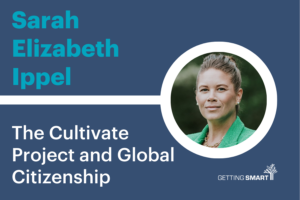

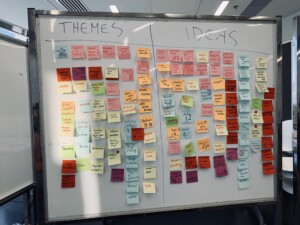
0 Comments
Leave a Comment
Your email address will not be published. All fields are required.